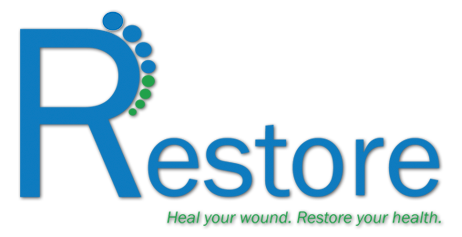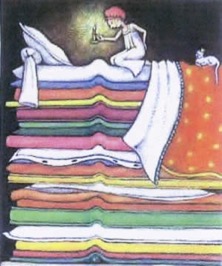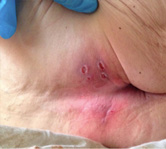5 Do’s and Dont’s of Pressure Ulcers


5 Do’s and Dont’s of Pressure Ulcers
Last month we discussed how skin can be under pressure as well as the mechanics of getting a pressure ulcer. This month we’ll discuss what the best strategies are to reduce pressure and prevent injury to the skin. If you or your loved one is at risk for pressure ulcers, then consider these principles in your daily routine.
1)
DO: Get proper pressure relief for both sitting in a chair and lying down in a bed.
There are specific cushions and mattresses designed for therapeutic levels of relieving pressure. The chair and bed cushions can be made of different materials such as gel, water, foam or air, and are designed to distribute the pressure evenly, away from the bony prominences. You don’t want your skin stuck between a rock (your bone) and a hard place (the surface you are sitting or lying on)!
Your health care professional can help to order what is covered for the level of activity and/or severity of wound that might be present.
 DON’T: Use “Donuts” as chair cushions!
DON’T: Use “Donuts” as chair cushions!
They will actually increase the pressure where the ring of the donut is, potentially causing more skin breakdown. Pillows and egg crate cushions are also poor at giving relief. These might be comforting for a short time, but they hold no ability to actually reduce pressures. Remember the story of the Princess and the Pea?
[/kc_column_text][/kc_column][/kc_row] 2) DON’T: Be a drag! 3) DON’T: Cover red spots or bruises with gauze or dressings. 4)
5) DON’T: Stress out about the pressure! For more details and discussion on the keeping the pressure of your feet, see this blog post on ‘Floating Heels’: http://goo.gl/NPMUKz
This blog post was written by Robin Carlson, PT CWS
DO: Move Frequently!
Change position, at least 3 times an hour while sitting – or every 2 hours when in bed. By shifting your weight while in a bed or chair, you open up those blood vessels and allow oxygen and nutrients to get to the skin and tissue faster. If in a bed, roll to the side or even partially toward one side to give the skin a break.
Any friction or shearing of skin across a surface will increase the likelihood of breakdown. Be careful when transferring in and out of bed, that heels or hips are not being dragged along the sheets. Also, when sitting up in bed or in a chair, sometimes one may slide down periodically. This increases pressure on the tailbone and can cause a sore.
DO: Practice “less is more” when it comes to pressure relief.
Avoid thick dressings over pressure wounds: padding a wound with thicker layers will actually increase the pressure on tissue since it will hit the bed or chair surface more prominently than a non-padded area.
Less is best also when putting pads beneath a person in a bed. The thicker pads will actually reduce the effectiveness of many specialty mattresses. A good trick is to use a bed sheet, folded into thirds, and placed beneath the patient’s body from just below hips to mid chest. This becomes your “draw sheet” to move him/her in the bed.
It is easier to observe any progression in the skin damage if left uncovered. Also, any tape or adhesive on a cover bandage can easily strip the skin and create skin breakdown. Generally do not cover anything that is NOT open. (Please always check this out with your wound care professional since looks can be deceiving).
DO: Treat your skin well
Keep skin clean, dry, and moisturized. Use a barrier ointment to protect skin from incontinence. DON’T: Rub or massage a pressure ulcer or any “hot spot" of red, tender skin.
DON’T: Rub or massage a pressure ulcer or any “hot spot" of red, tender skin.
The skin is red because it is damaged! Rubbing it will not improve the circulation, it will only damage it more.
DO: Pay special attention to feet!
We have very thin skin over the many bones in our feet and when we don’t move, they are very susceptible to getting blisters or wounds.
These are tips to make you aware of what can happen. Most of the time, by being aware and putting pressure relief in place, these are avoidable and can be healed if they occur!
What is PT CWS? Physical Therapist and Certified Wound Specialist
